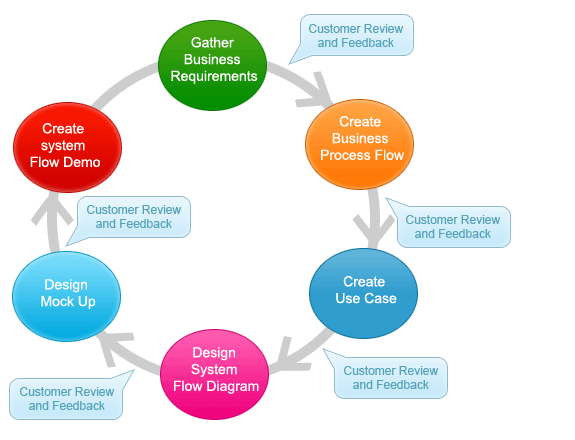Designing your company website can be a
challenging proposition. You’ve got to juggle the expectations of
many stakeholders, and you can often hit obstacles that prevent new
ideas from emerging.
I was the design manager for a large
company website for nearly six years, and during that time, I found
myself losing perspective of what our target audiences really needed.
Call it “tunnel vision.” When you work on the same website, it
often helps to take a step back and think through new approaches.
That’s the purpose of this blog post.
What follows are some tips, tricks,
shortcuts and general advice for creating great website design. Can
you try any of these to take your web design to the next level?
1) Design in shades of gray, then add
color
If your web designer creates wireframes
prior to visual designs, then you know the value of starting with
shades of gray. Turn your wireframe into a grayscale visual design,
add your photography, then carefully add color to design elements one
at a time.
This will prevent an “overdesigned”
website and help to place prominence on just the items that need it.
2) Use Keynote (Mac) to create rapid
page prototypes
You don’t need Photoshop to create
rapid prototypes of web pages, landing pages, call to actions or
other web interface elements. There’s an entire underground
movement around using Keynote (that’s Apple’s version of
PowerPoint) to create mockups.
There’s even an online repository
containing user interface design templates for wireframing,
prototyping and testing mobile and web apps in Keynote.
3) Add web fonts to your corporate
style guide
It’s 2015, and if your corporate
style guide doesn’t include web fonts, then you need to look into
adding those so your
Outsource Web Development has the same governance that corporate
documents and collateral does.
If you haven’t looked into this yet,
Google Fonts is a great place to start. Find a suitable web font and
define usage in your corporate style guide so you use it consistently
online
4) Bury those social media icons
You did all that work to get people to
your website, and yet you’re inviting them to leave? That’s what
you’re doing when you place social media icons in a prominent
location of your website, like in the header. Bury the icons in the
footer.
If people are on your website, you want
them to stay, learn and perhaps inquire about your services, not
check out company picnic photos and bowling outings on Facebook.
Social media should send people to your website, not vice versa.
5) Ditch the slideshow/carousel
When the homepage slideshow/image
carousel came into fashion, it was a way to get lots of information
on the first page of your website. The problem is that most people
don’t stay on the page long enough to experience all of the
tiles/messages.
What’s more is that the messages and
images usually aren’t relevant to your prospect’s first visit.
What’s the one thing a visitor should take away from their website
visit? Promote that one thing -- usually what your company does in
layman’s terms -- and ditch the rest.
6) Simplify navigation
Reducing your visitors’ options might
seem counter intuitive, but it can actually help guide people to your
most productive content. Rather than overwhelming your website
visitors with links to every page, simplify your navigation.
Eliminate dropdown menus and especially
multi-tier dropdown navigation that only the most skilled mouse user
can navigate, and go a step further by reducing the number of links
in the header or sidebar of your website.
7) Remove sidebars
The sidebar has been an especially
popular web design trend for the last ten years, especially on blogs.
Many companies are finding that when they remove sidebars from their
blogs, it encourages reader attention to the article and the call to
action at the end.
Removing the sidebar on our company
blog has increased the number of clicks on call to action graphics
over 35%.
8) Get color inspiration from nature
Struggling to find the perfect color
combination for your outsource web Development or a call to action graphic? Get your
inspiration from nature. You can either use your own camera to
photograph natural wonders around you or find landscape photos on the
web, the use a color picker to select a color. Nature’s color
palette never fails.
9) Step away from the computer
I believe that good design starts with
great planning. Getting your ideas down on paper or on a whiteboard
can help you iterate through a design, refining it and adding detail
as you go along. Drawing on a whiteboard can also make the design
process collaborative and allow other team members to give input.
It’s also easy to erase pencil from
paper or marker from a whiteboard and make quick changes, and once
you have something concrete to work with, snap a photo with your
mobile phone and get to work on screen.
10) Use Pinterest to create mood
boards
When you’re putting together
inspiration and ideas for a new website, or you’re redesigning part
of your website, you need a way to collect your inspiration in one
place for future reference.
Did you know that you can use Pinterest
to create a mood board of your favorite images, colors, layouts,
patterns, sample websites and concept material? Another great
advantage of using Pinterest is that other designers create and share
mood boards too, and they’ve already curated a ton of resources
that you can use.
11) Increase your font size
Typography is incredibly important in
web design. Text is hard enough to read on a computer screen, so you
have to make the important things stand out.
One way to do this is to increase your
font sizes, especially for headings and important blocks of text.
Consider increasing the size of your normal font, too.
12) Use white space
It may be hard to believe that using
whitespace is a hack, but I evaluate websites every day that could
use more whitespace. Not every blank area of the screen needs to be
filled.
Even though whitespace and simplicity
are in style right now, too many companies try to cram everything
into a small space, or worse yet, “above the fold.” Give your
design room to breathe, and your website visitors will be able to
find things easier.
Android App Developers India







